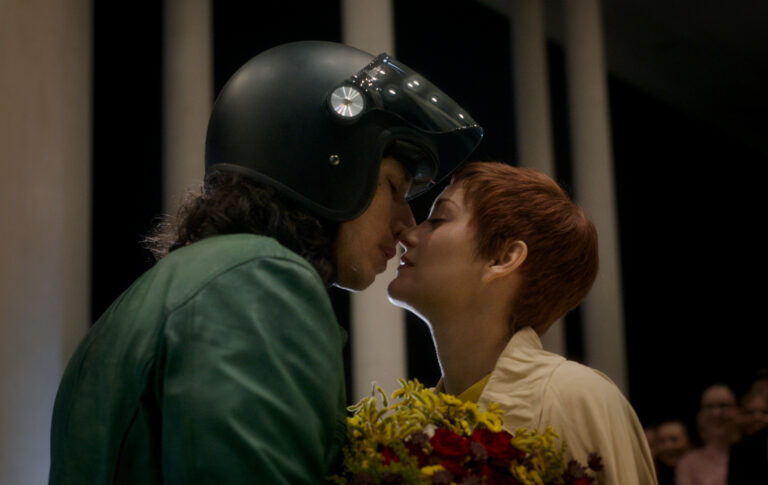In the opening moments of Leos Carax’s Annette, fingers bang out a punchy piano riff while backup dancers bob their heads along with the beat as Russell Mael — one half of the musical duo Sparks — launches into a catchy melody, repeating Carax’s own inquiry from the recording studio control booth: “So may we start?” A few bars later, as the camera pulls back, Russell and brother Ron remove their headphones and saunter outside onto the Santa Monica streets, with stars Adam Driver and Marion Cotillard joining in for the tongue-in-cheek number. “We’ll sing and dance for you in minor keys,” they promise, while the Sparks brothers complain “the budget is large, but still, it’s not enough.”
Amusing though its opening may be, Annette wastes little time descending into tedium. The film, an original musical co-written by Carax and the Maels, isn’t quite sung-through in the vein of Hamilton, but the numbers come so frequently that it might as well be. This would be less objectionable if Driver and Cotillard — both incredibly talented actors — were particularly gifted vocalists, or if the music was especially good, but alas, neither happens to be true.
Driver portrays Henry McHenry, a caustic stand-up comedian who seemingly delights in adopting a combative relationship with his audience, while Cotillard plays the object of his affection, Ann, an opera singer whose star is on the rise. Their burgeoning romance is fodder for the paparazzi, but remains perplexing to the audience; as if to address this, one uniquely irritating number finds the duo repeating “we love each other so much” more than a dozen times as they stroll through the woods on a sunny afternoon, zoom down the street on Henry’s motorcycle, and make love (journalists who screened the film during its world premiere at Cannes feigned shock at Driver pausing in the midst of a sex act to belt out a few bars).
Annette‘s 140 minutes are filled with bizarre choices, the most mystifying of which involves the film’s namesake, the daughter to whom Ann gives birth about a third of the way through. Inexplicably, Annette is portrayed as a marionette, and a creepy one at that; you could pluck her from the screen and deposit her right next to Chucky in the latest Child’s Play sequel/reboot and most people would hardly bat an eye. Rolling with the punches when the punches are this weird is a pretty big request, and yet pales in comparison to Carax’s larger ask: that audiences sit through this meandering, bloated, mundane experiment in the first place. Like Driver’s character, Carax seems less interested in entertaining than he does in antagonizing, and frustration — with a smattering of exhaustion — feels like the most appropriate response.

